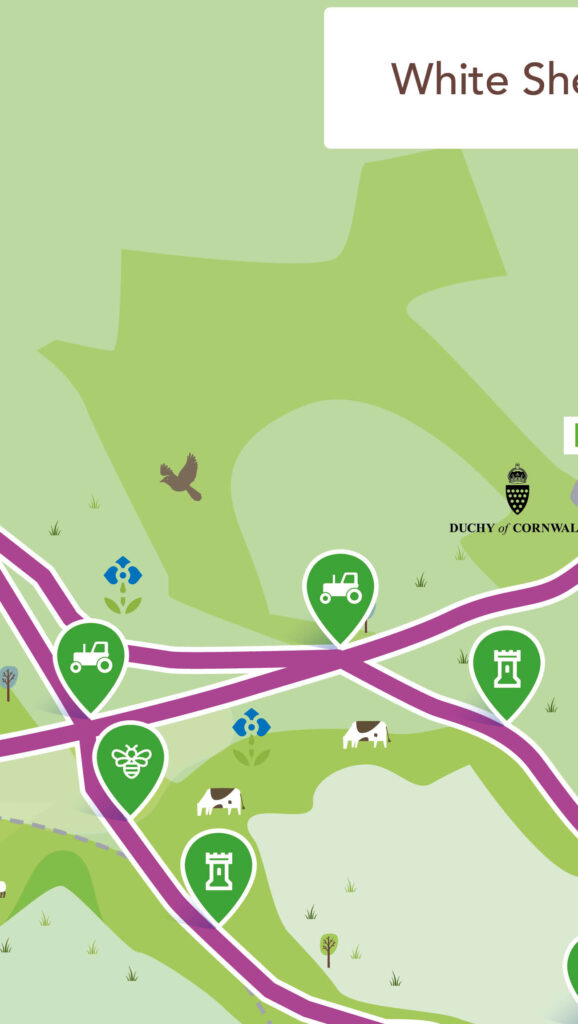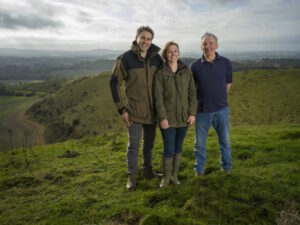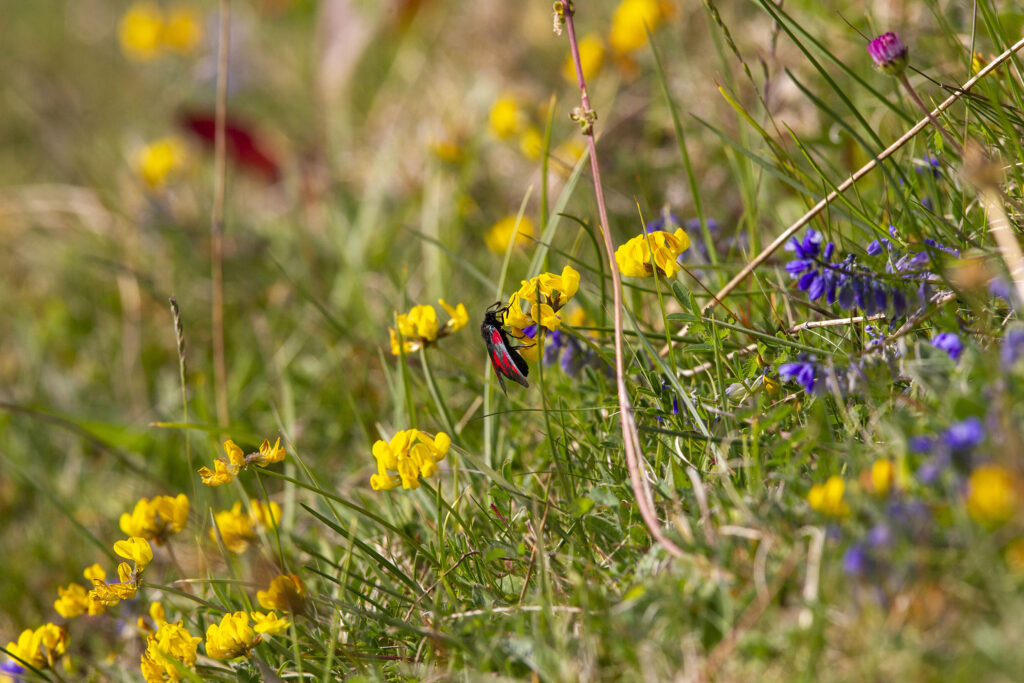
Manor Farm

The Coward Family – photo credit: Charles Sainsbury-Plaice
About the farm
Manor Farm has been farmed by the Coward family since 1963 and is currently managed by David Coward, his son Will and daughter-in-law, Marie.
Manor Farm is situated within the Cranbourne Chase National Landscape (formerly called Area of Outstanding Natural Beauty).
The farm consists of permanent pasture, which supports a herd of pedigree Aberdeen Angus cattle and arable land, where crops such as winter wheat, oilseed rape, herbal leys and maize are grown.
Nature
The family at Manor Farm manage part of the White Sheet Hill SSSI (Site of special scientific interest).

Six-spot burnet moth on kidney vetch – photo credit – Charles Sainsbury-Plaice
Wildflowers found on the grassland include: Chalk Milkwort, Harebell, Meadow Vetchling, Horseshoe Vetch, Germander Speedwell, Mouse ear Hawkweed, Salad Burnet, Small Scabious, Stemless Thistle and Wild Carrot.
There is a rich butterfly population on the farm, to name but a few: the Common Blue, Green Hairstreak, Grizzled Skipper and the nationally restricted Adonis Blue, the food plant of which, the Horseshoe Vetch is widespread on Whitesheet Hill.
Other animals that also make use of the downland and scrub on Manor Farm include birds such as Red Kites, Skylark, Yellowhammer, Green Woodpecker and Kestrel.
Mammals such as Field voles, Rabbits, Roe Deer and Brown Hares are also present on Manor Farm. Reptiles include Common Lizards, Slow-Worms and Adders.
Other habitats that are present at Manor Farm include small woodland copses, areas of scrub, the head of the Shreen chalk stream, as well as arable land and field margins.
Manor Farm is managed in a regenerative manner and improving the below ground soil ecosystem is a key priority for the Coward family.
History
This landscape is historically rich and some of the historical features found at Manor Farm are listed below.
Bowl Barrows – There are multiple bowl barrows across Manor Farm. A bowl barrow is a type of burial mound with the barrow being the mound of earth used to cover a tomb. These date from the Late Neolithic period to the Late Bronze Age, with most examples belonging to the period 2400-1500 BC.
Crossdykes are substantial linear earthworks typically between 0.2 km and 1 km long, dating from the Middle Bronze Age. It is believed they were used as territorial boundary markers, although they may also have been used as trackways, cattle droveways or defensive earthworks. The crossdykes present at Manor Farm would have been associated with Whitesheet Camp- a large hillfort with two bowl barrows and a beacon situated on the summit of a prominent south facing spur of White Sheet Hill.
Pond barrows are ceremonial or funerary monuments of the Early to Middle Bronze Age, most examples dating to between 1500 and 1000 BC. Pond barrows are the rarest form of round barrow, with about 60 examples recorded nationally and a distribution largely confined to Wiltshire and Dorset. Due to their rarity, all identified pond barrows would normally be considered to be of national importance. The pond barrow on Manor Farm is a well-preserved example of its class.
Along the Roman Road at the top of Mere Down, a milestone can be found dated 1750. The milestone indicates that it is 22 miles to SARUM, the ruined and deserted site of the earliest settlement of Salisbury.
Manor Farm hosted American soldiers during World War II and the foundations of their bunkers can still be found today.
Countryside Code
Respect everyone
- Leave gates as you find them.
- Do not block access to gateways when parking.
- Be polite to others and share the space.
Protect the environment
- Take your litter away with you – this includes dog poo!
- Keep dogs under control and in sight.
- Care for nature and don’t cause any disturbance.
- Do not light fires or BBQs.